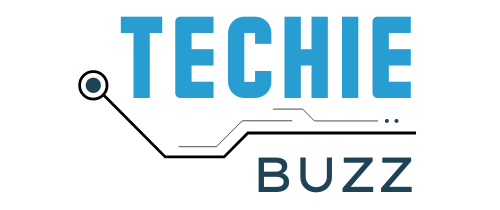Recruiting executives used to follow a predictable pattern. You’d look for someone with years of experience, a polished résumé, and a history of managing teams or driving results in similar industries.
But the game has changed. Today’s market rewards something entirely different: agility, cultural intelligence, digital fluency, and the ability to lead in times of uncertainty.
Companies are no longer just filling roles. They’re building leadership ecosystems that can adapt, evolve, and inspire in unpredictable conditions.
The traditional search model is being replaced by a more dynamic, insight-driven approach that blends data with intuition and culture with capability.
Let’s take a close look at how executive recruitment is evolving, what’s driving that change, and how organizations can hire leaders who actually move the needle.
Shifting Priorities in Leadership Search

The criteria for executive hiring have expanded far beyond experience and education. Boards and hiring committees now expect candidates to bring multidimensional skills and a future-oriented mindset.
A few key shifts define the current landscape:
| Old Priorities | Emerging Priorities |
| Industry tenure and credentials | Adaptability and cross-sector experience |
| Command-and-control leadership | Collaborative and inclusive leadership |
| Financial performance focus | Purpose-driven, sustainable growth |
| Static job descriptions | Fluid, outcome-based mandates |
Executives are being evaluated not just for what they’ve done, but for how they think and respond to change.
Boutique search firms like Ned Capital are helping companies rethink board composition, prioritizing adaptable non-executive directors over traditional career insiders.
Why adaptability trumps experience
Markets evolve faster than ever. A leader who thrives in one environment may struggle in another if they can’t adjust.
The most sought-after executives are those who can read signals, pivot strategies, and keep teams aligned through transitions – whether that’s a digital overhaul, a global expansion, or a cultural reset.
The Rise of Purpose and Culture in Recruitment

A title and a paycheck are no longer enough to attract or retain great leaders. Candidates want to work for organizations that stand for something real.
The recruitment process now involves more open conversations about values, ethics, and culture fit.
The alignment factor
Companies that hire executives without cultural alignment often face silent breakdowns later – conflicting communication styles, differing priorities, and weakened trust.
That’s why many executive search firms now include cultural diagnostics as part of their process. They assess how a candidate interacts, what drives their decision-making, and how they influence people under pressure.
Why authenticity matters
Executives can no longer afford to be overly polished or performative. Teams and stakeholders expect genuine communication, transparency, and humility.
Recruiters are paying attention not just to what candidates say, but to how they listen and engage with others during interviews.
Technology’s Quiet Revolution in Executive Search

The recruitment process has become more data-rich and precise thanks to advanced analytics, AI-driven assessments, and digital platforms. However, the human touch still plays the decisive role.
How data improves decision-making
Machine learning tools can now scan large pools of candidates and flag patterns in leadership performance, succession readiness, and behavioral traits.
They help narrow down shortlists faster, reducing unconscious bias in the early stages. But they don’t replace judgment; they enhance it.
A recruiter who uses data effectively can see beyond surface credentials. For example:
- Predictive analytics can estimate how well a candidate might adapt to organizational changes.
- Sentiment analysis from public data can highlight communication style and public perception.
- Skill gap mapping can identify where an incoming leader will need support to succeed.
The human layer that technology can’t replace
Even with all the tools available, no algorithm can measure trust, emotional intelligence, or chemistry. The best executive recruiters combine digital insights with human intuition.
They know when to question what the data suggests, when to dig deeper, and when to step back and let a conversation reveal the truth.
Globalization and Cross-Border Hiring
The executive search market has gone global. Hybrid work and remote management have opened doors to international candidates who might never have been considered before.
Companies are increasingly comfortable hiring leaders from different geographies and industries, especially if they bring a global mindset.
Expanding the talent pool
International recruitment brings access to a wider range of experiences and leadership styles. It’s no longer rare to see a CFO in Vienna managing teams in São Paulo or a Chief Product Officer in Nairobi overseeing operations across Europe.
However, this also brings challenges in terms of compliance, compensation structures, and cultural integration. Recruiters must evaluate:
- Legal and tax implications of cross-border leadership contracts.
- Cultural adaptability and communication style across regions.
- Time zone coordination and team cohesion.
The importance of cultural intelligence
Global leadership requires empathy and flexibility. Recruiters are increasingly looking for leaders who can navigate different communication styles and manage multicultural teams without imposing one-size-fits-all solutions.
The Role of Interim Executives and Fractional Leadership

Another trend reshaping recruitment is the growing demand for interim or fractional executives: leaders who step in for specific missions rather than long-term roles.
Why it’s growing
Organizations facing transformation projects, mergers, or sudden leadership gaps often need immediate, experienced help. Interim executives bring specialized expertise without the long onboarding time of permanent hires.
They’re especially common in sectors undergoing disruption, like fintech, biotech, and logistics, where the speed of change outpaces traditional hiring timelines.
Benefits of fractional leadership
Fractional executives offer flexibility and cost efficiency while still bringing top-tier skills. They can help companies:
- Bridge leadership gaps during transitions.
- Launch or restructure business units.
- Provide mentorship to rising internal leaders.
- Strengthen governance during periods of change.
This model allows organizations to access leadership talent as a service – scalable, strategic, and time-bound.
Soft Skills Take Center Stage
Technical knowledge and credentials remain important, but recruiters now weigh soft skills heavily during evaluations.
The pandemic accelerated this shift, highlighting the importance of empathy, communication, and resilience.
Key leadership traits now in focus
| Trait | Why It Matters |
| Emotional intelligence | Drives trust, morale, and team stability |
| Resilience | Helps maintain momentum through uncertainty |
| Curiosity | Keeps leaders learning and adapting |
| Empathy | Strengthens culture and retention |
| Clarity | Ensures direction during complex transitions |
Recruiters use behavioral interviews and psychometric assessments to evaluate how candidates respond to pressure or conflict.
They also gather feedback from peers and subordinates rather than just senior executives, giving a more realistic picture of leadership impact.
Diversity, Equity, and Inclusion Shape Hiring Priorities

Diversity is no longer treated as a box-ticking exercise. It’s a central pillar of leadership strategy. Boards and shareholders expect visible progress in representation and inclusion, not just public statements.
What’s changing in practice
Search firms are expanding their sourcing networks to reach underrepresented talent pools. They’re partnering with professional associations, academic institutions, and affinity groups to ensure fairer access to opportunities.
Companies are also setting measurable diversity targets at the executive level. Some now require that at least half of all shortlisted candidates represent diverse backgrounds, ensuring equity before selection even begins.
Inclusive leadership as a differentiator
Executives who create inclusive environments tend to outperform those who rely solely on traditional hierarchies. Inclusive leaders listen, recognize contributions, and make decisions collaboratively.
Recruiters are keenly aware that inclusion drives innovation, employee engagement, and reputation.
Candidate Experience Becomes Strategic
Executive recruitment used to feel like a one-way process, with companies holding most of the power. Not anymore. Top candidates now evaluate organizations as much as they’re being evaluated themselves.
The recruitment process as brand signal
Every interaction during recruitment sends a message about company culture. Delays, lack of transparency, or disorganized communication can drive candidates away. Meanwhile, thoughtful, well-structured processes build trust and attract stronger interest.
Key areas of candidate experience to improve
- Communication clarity: Keep timelines transparent and feedback consistent.
- Personalization: Tailor interview formats and questions to the candidate’s strengths.
- Speed: Move quickly while maintaining quality; the best candidates rarely wait long.
- Follow-up: Even after rejection, provide closure and constructive feedback.
Organizations that treat candidates with respect tend to leave a lasting positive impression, regardless of hiring outcome.
The Growing Role of Employer Branding

In a market where executives have options, reputation matters. Strong employer branding can make or break recruitment success.
Candidates look for credibility, authenticity, and alignment between what a company says and what it actually practices.
What candidates research before saying yes
- Leadership reputation and transparency
- Corporate values and sustainability commitments
- Employee testimonials and retention data
- Media coverage and investor relations
- Glassdoor or industry reputation scores
Recruiters now collaborate closely with marketing teams to ensure the hiring story matches the brand narrative. It’s no longer just about compensation – it’s about credibility.
Metrics That Define Success in Modern Recruitment
Recruitment used to be judged mainly by how quickly a position was filled. Now, success is measured by long-term outcomes.
| Metric | Modern Focus |
| Time to hire | Still relevant but balanced by quality |
| Retention rate | Tracks long-term alignment and satisfaction |
| Cultural integration score | Evaluates post-hire engagement and fit |
| Leadership impact | Measures tangible business outcomes |
| Internal succession readiness | Reflects organizational resilience |
Companies that track these indicators can refine their hiring process continuously, improving both efficiency and alignment with long-term goals.
The Recruiter’s Role Evolves
Executive recruiters are no longer just matchmakers. They’re strategic advisors who help shape leadership vision.
Their work involves:
- Mapping market trends and leadership availability.
- Advising on compensation structures and retention strategy.
- Coaching boards on cultural alignment and communication.
- Supporting onboarding and transition integration.
The best recruiters act as partners, not intermediaries. They understand the nuances of human behavior, business cycles, and market shifts – and they bring that insight into every search.
Building a Future-Ready Recruitment Strategy

Organizations that succeed in executive hiring over the next decade will focus on three things:
- Long-term vision: Hire for future potential, not just past performance.
- Cultural intelligence: Make values alignment a measurable part of recruitment.
- Adaptability: Stay flexible with hybrid, interim, or cross-border models.
A future-ready recruitment strategy blends structure with curiosity. It uses data without losing empathy and builds leadership pipelines that reflect real-world diversity and adaptability.
Final Thoughts
Executive recruitment is no longer about ticking boxes or chasing titles. It’s about finding people who can steer organizations through uncharted territory with authenticity, empathy, and purpose.
The landscape keeps shifting, shaped by technology, global reach, and cultural change. The organizations that thrive are the ones treating recruitment not as a transaction but as a relationship, one that builds trust, aligns vision, and creates space for leaders who can actually make a difference.
